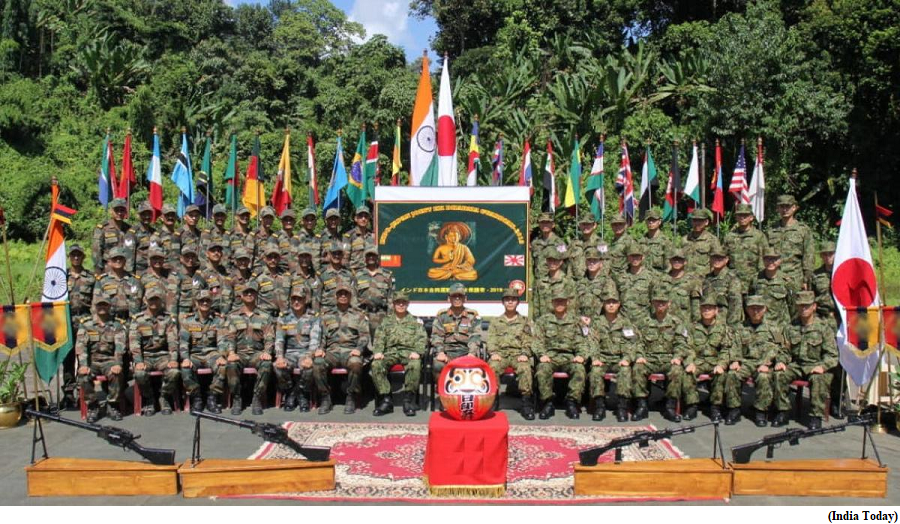Exercise Dharma Guardian (GS Paper 3, Defence)

Why in news?
- The 5th edition of Joint Military Exercise ‘Dharma Guardian’ between the Indian Army and the Japan Ground Self Defence Force commenced recently at Mahajan Field Firing Ranges in Rajasthan.
- The Exercise is scheduled to be conducted from 25th February to 9th March 2024.
- Exercise 'Dharma Guardian’ is an annual exercise and conducted alternatively in India and Japan.
Details:
- The contingent of both sides comprises of 40 personnel each.
- The Japanese contingent is being represented by troops from the 34th Infantry Regiment and Indian Army contingent is being represented by a Battalion from the Rajputana Rifles.
Aim:
- It aims to foster Military Cooperation and enhance combined capabilities to execute joint operations in semi-urban environment under Chapter VII of United Nations Charter.
- The Exercise would focus on high degree of physical fitness, joint planning, joint tactical drills and basics of special arms skills.
Key Highlights:
- Tactical drills to be practiced during the Exercise will include establishing of Temporary Operating Base, creating an Intelligence, Surveillance and Reconnaissance (ISR) Grid, setting up Mobile Vehicle Check Post, executing Cordon and Search Operations in a hostile village, Heliborne operations and House Intervention Drills.
- A Weapon and Equipment Display will also be organised showcasing ‘Atmanirbhar Bharat’ initiative and the growing defence industrial capability of the country.
- It will enable the two sides to share their best practices in Tactics, Techniques and Procedures of conducting tactical operations.
- The Exercise will also facilitate developing inter-operability, bonhomie and camaraderie between troops of both the sides.
Way Forward:
- This will enhance the level of defence cooperation, further fostering bilateral relations between the two friendly nations.
IGNCA language atlas to shine a light on India linguistic diversity
(GS Paper 1, Culture)
Context:
- As India makes efforts towards imparting education in the mother tongue, especially at the primary level, a crucial question remains on the actual number of languages that can be considered to be “active” in the country.
- A proposed linguistic survey across the country by the Indira Gandhi National Centre for the Arts (IGNCA), which aims to enumerate how many languages are spoken and in which States and regions, can provide the answer.
- The IGNCA is an autonomous body under the Union Culture Ministry.

Official Languages in India:
- India recognises 22 languages officially, which are part of Schedule 8 of the Indian Constitution. According to Census data, 97% of the Indian population speaks one of these languages.
- There are an additional 99 non-scheduled languages included in the Census, and according to the 2011 Census, around 37.8 million people identify one of these non-Scheduled languages as their mother tongue.
- The native language of 1.2 million people remains unaccounted for due to the decision not to include languages with less than 10,000 speakers in the Census since 1971. Many of these languages not recorded in the official Census records are spoken by tribal communities.
- Thus, of all the Census surveys, the official Census of 1961 was the most exhaustive and detailed with respect to linguistic data. In this Census, even languages with a single speaker were included in the records.
Stakeholders:
- According to the Detailed Project Report (DPR) prepared by the IGNCA, the stakeholders in the survey would be the Ministries of Culture, Education, Tribal Affairs, Home, Social Justice and Empowerment, and Development of North East Region, apart from various languages communities.
- The IGNCA has identified the Central Institute of Indian Languages, the National Museum, Centres for Endangered Languages, and the Linguistic Departments of various universities as potential partners and collaborators in carrying out the survey.
Way Forward:
- There is an urgent need to carry out a comprehensive linguistic survey in order to create the Language Atlas of India



